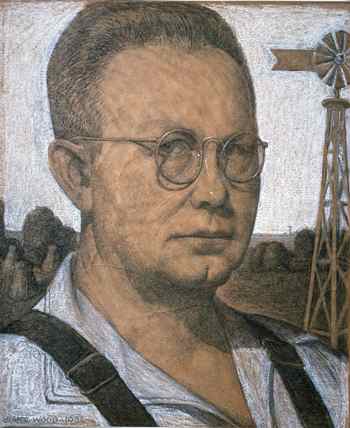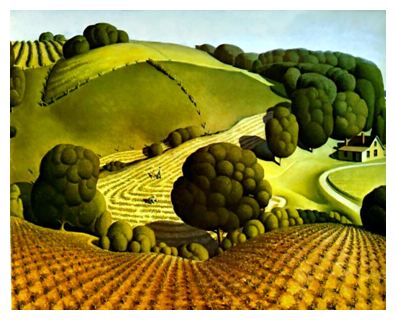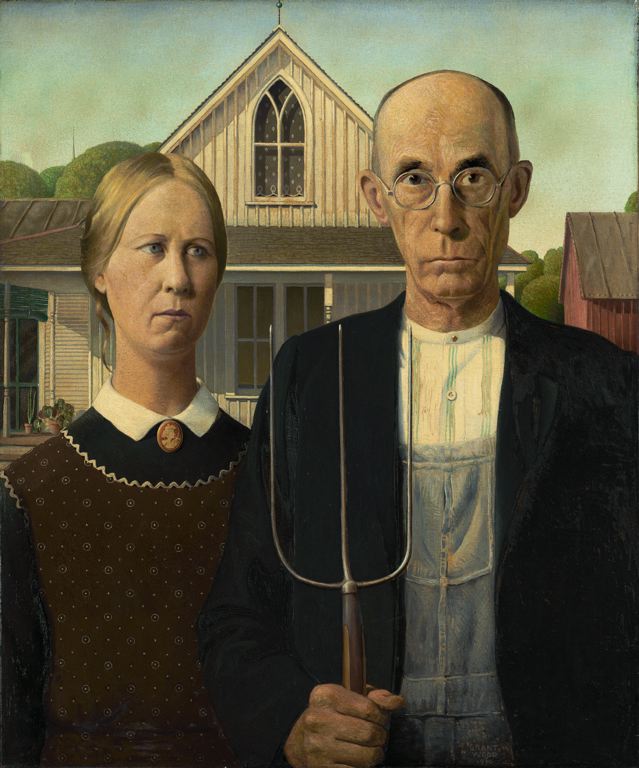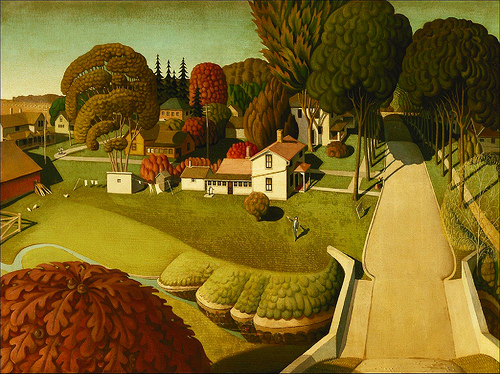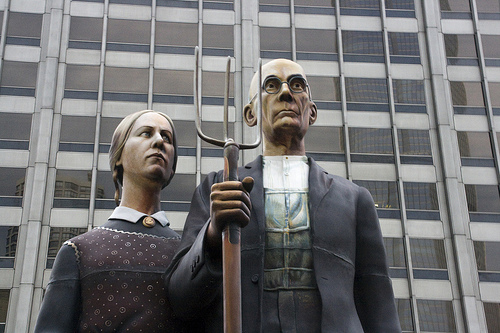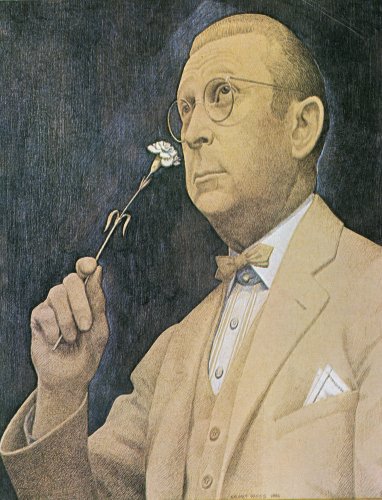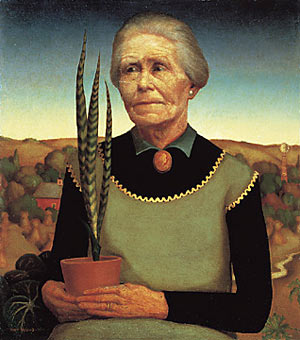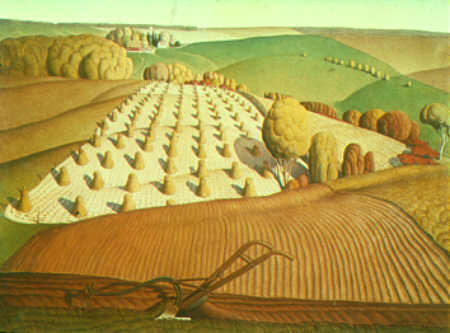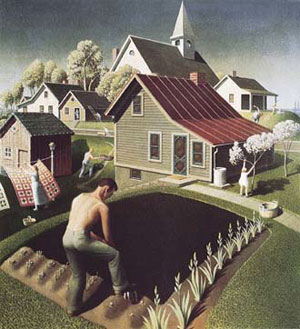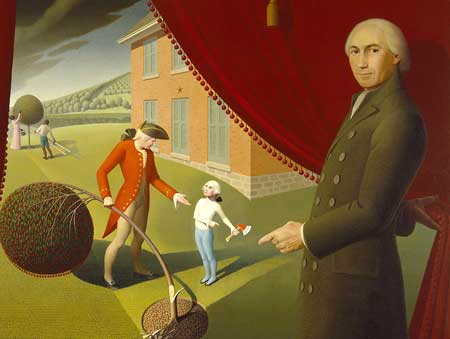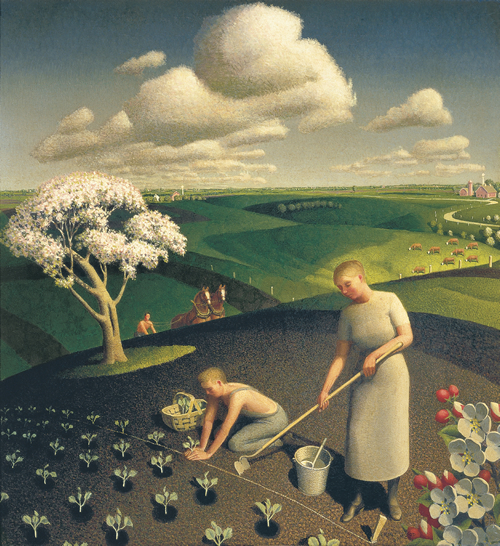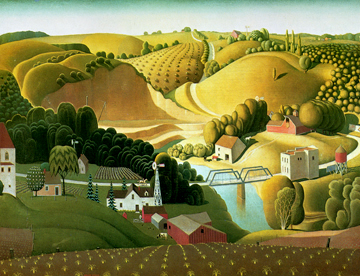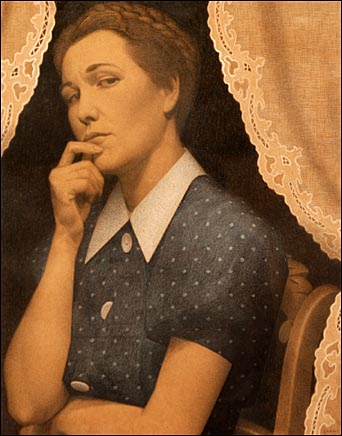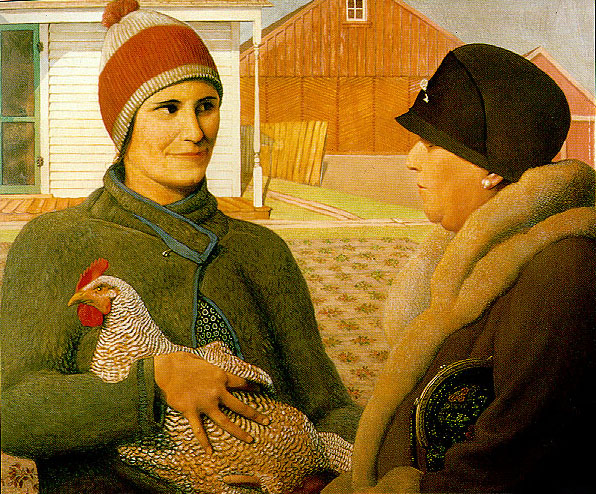<Back to Index>
- Botanist Joseph Banks, 1743
- Painter Grant DeVolson Wood, 1891
- 1st Prime Minister of France Charles Maurice de Talleyrand Périgord, 1754
PAGE SPONSOR
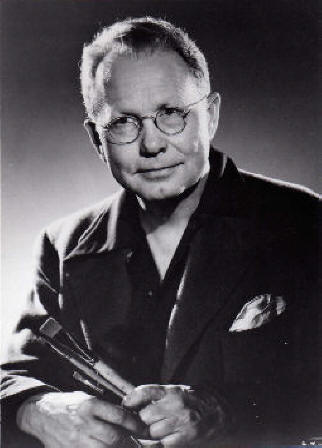

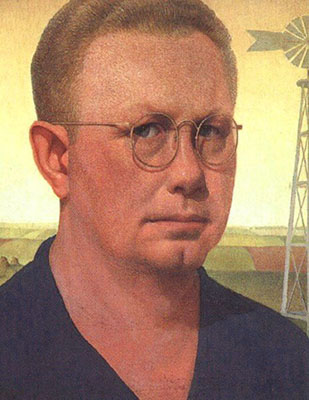
Grant DeVolson Wood (February 13, 1891 – February 12, 1942) was an American painter, born in Anamosa, Iowa. He is best known for his paintings depicting the rural American Midwest, particularly the painting American Gothic, an iconic image of the 20th century.
His family moved to Cedar Rapids after his father died in 1901. Soon thereafter he began as an apprentice in a local metal shop. After graduating from Washington High School, Wood enrolled in an art school in Minneapolis in 1910, and returned a year later to teach in a one-room schoolhouse. In 1913 he enrolled at the School of the Art Institute of Chicago and did some work as a silversmith.
From 1920 to 1928 he made four trips to Europe, where he studied many styles of painting, especially impressionism and post - impressionism. But it was the work of the fifteenth century Flemish artist Jan Van Eyck that influenced him to take on the clarity of this new technique and to incorporate it in his new works. From 1924 to 1935 Wood lived in the loft of a carriage house that he turned into his personal studio at "5 Turner Alley" (the studio had no address until Wood made one up himself). In 1932, Wood helped found the Stone City Art Colony near his hometown to help artists get through the Great Depression. He became a great proponent of regionalism in the arts, lecturing throughout the country on the topic.
Wood taught painting at the University of Iowa's School of Art from 1934. During that time, he supervised mural painting projects, mentored students, produced a variety of his own works, and became a key part of the University's cultural community. A closeted homosexual, he was fired because of a relationship with his personal secretary. On February 12, 1942, one day before his 51st birthday, Wood died at the university hospital of liver cancer.
When Wood died, his estate went to his sister, Nan Wood Graham, the woman portrayed in American Gothic. When she died in 1990, her estate, along with Wood's personal effects and various works of art, became the property of the Figge Art Museum in Davenport, Iowa. Wood
was an active painter from an extremely young age until his death, and
although he is best known for his paintings, he worked in a large
number of media, including lithography, ink, charcoal, ceramics, metal, wood and found objects. Throughout
his life he hired out his talents to many Iowa based businesses as a
steady source of income. This included painting advertisements,
sketching rooms of a mortuary house for promotional flyers and, in one
case, designing the corn-themed decor (including chandelier) for the dining room of a hotel. In addition, his 1928 trip to Munich was to oversee the making of the stained glass windows he
had designed for a Veterans Memorial Building in Cedar Rapids. The
window was damaged during the 2008 flood and it is currently in the
process of restoration. He again returned to Cedar Rapids to teach Junior High students after serving in the army as a camouflage painter. Wood is most closely associated with the American movement of Regionalism that
was primarily situated in the Midwest, and advanced figurative painting
of rural American themes in an aggressive rejection of European
abstraction. Wood was one of three artists most associated with the movement. The others, John Steuart Curry and Thomas Hart Benton,
returned to the Midwest in the 1930s due to Wood's encouragement and
assistance with locating teaching positions for them at colleges in
Wisconsin and Kansas, respectively. Along with Benton, Curry, and other Regionalist artists, Wood's work was marketed through Associated American Artists in New York for many years. Wood is considered the patron artist of Cedar Rapids, and his childhood country school is depicted on the 2004 Iowa State Quarter. Wood's best known work is his 1930 painting American Gothic, which is also one of the most famous paintings in American art, and one of the few images to reach the status of universally recognised cultural icon, comparable to Leonardo da Vinci's Mona Lisa and Edvard Munch's The Scream. It was first exhibited in 1930 at the Art Institute of Chicago, where it is still located. It was given a $300 prize and made news stories country-wide, bringing Wood immediate recognition. Since then, it has been borrowed and satirised endlessly for advertisements and cartoons. Art critics who had favorable opinions about the painting, such as Gertrude Stein and Christopher Morley,
assumed the painting was meant to be a satire of repression and
narrow mindedness of rural small town life. It was seen as part of the
trend toward an increasingly critical depictions of rural America,
along the lines of Sherwood Anderson's 1919 Winesburg, Ohio, Sinclair Lewis' 1920 Main Street, and Carl Van Vechten's The Tattooed Countess in literature. Wood rejected this reading of it. With the onset of the Great Depression, it came to be seen as a depiction of steadfast American pioneer spirit. Another reading is that it is an ambiguous fusion of reverence and parody. Wood's inspiration came from Eldon, southern Iowa, where a cottage designed in the Gothic Revival style with an upper window in the shape of a medieval pointed arch, provided the background and also the painting's title. Wood decided to paint the house along with "the kind of people I fancied should live in that house." The painting shows a farmer standing beside his spinster daughter, figures modeled by the artist's dentist and sister, Nan (1900 – 1990). The dentist, Dr. Byron McKeeby (1867 – 1950) was from Cedar Rapids, Iowa. The woman is dressed in a colonial print apron mimicking 19th century Americana and the couple are in the traditional roles of men and women, the man's pitchfork symbolizing hard labor. The
compositional severity and detailed technique derive from Northern
Renaissance paintings, which Grant had looked at during three visits to
Europe; after this he became increasingly aware of the Midwest's own
legacy, which also informs the work. It is a key image of Regionalism.
